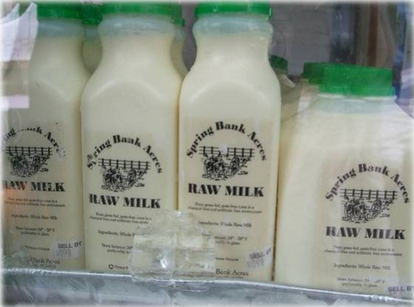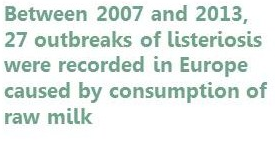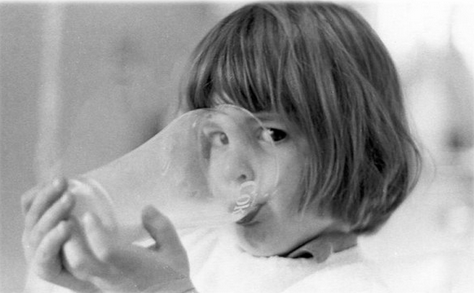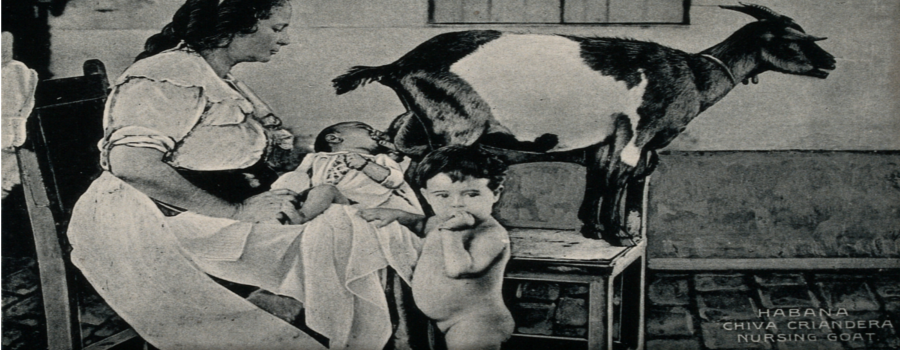
Surely many of you have as childhood memory go shopping with your parents to buy fresh milk from farm or the nearest village, or even remembers the van of milkman that went selling the milk in jugs by the streets. This flavour, the cream was left on the surface after boiling at home and what good this cream was to prepare delicious pastries!
In Spain the direct supply by the producer of small quantities of raw milk to the final consumer or to local retail establishments that supply directly to consumers is prohibited, according to Royal Decree 640/2006.
But meanwhile the AECOSAN (Spanish Agency of Consumer Affairs, Food Security and Nutrition) is considering the possibility of amending Royal Decree 640/2006, so that by 2015 it requested the Scientific Committee to report on the microbiological risks associated with the consumption of milk raw and processed dairy products made from raw milk. The report by the Scientific Committee gathered concretely aspects:
- The sale of raw milk and cream
- The production of cheese more than 60 days with raw milk that does not meet the criteria somatic cell and total germs
- The applicable requirements colostrum.
However, the sale of raw milk and cream in Spain intended for direct human consumption is not limited or prohibited, if all the requirements of Regulation (EC) No 852/2004 and Regulation (EC) No 853/2004 are achieved.
Therefore, currently in Spain we can find places to buy raw milk, in fact the trend for “natural is healthier” and other trends have increased the sale of this product. In Spain 42 tons of raw milk were consumed in 2013 (1.2% of all milk consumed), according to the Ministry of Agriculture, Food and Environment. In the United States these trends are much higher, and there are lobby groups that promote the consumption of raw milk and dairy products, but is it safe drinking raw milk?
According to European Union (EU) legislation, “raw milk” is defined as milk produced by the secretion of the mammary gland of farmed animals that has not been heated to more than 40 °C or undergone any treatment that has an equivalent effect. Therefore, when it comes to raw milk consumption we refer to milk without any treatment, not even if we purchased raw milk and it is boiled by us in our home, and by the way, it is made at the discretion of each one.

Milk is a rich in nutrients, high water activity and with proper pH for growth of microorganisms, both microorganisms beneficial (species of the genera Lactobacillus, Streptococcus, Enterococcus) as pathogens (the most common organisms Salmonella spp., Campylobacter spp., Escherichia coli, Yersinia enterocolitica, Listeria monocytogenes and Staphylococcus aureus, but also viruses, parasites and food toxins) and this is where it runs a risk when consuming raw milk or products made from it.
Raw milk, contrary to what many people think, is not sterile, and may be the vehicle for the transmission of various diseases, some of them very serious depending on the state of health of the affected person or the moment of the life (children, pregnant women, ageing people, immunocompromised persons, etc.). Potential pathogens are not eliminated because does not exist a heat treatment, and may have reached the milk by a systemic infection of animals, or mastitis thereof (udder infection), addition during milking and subsequent distribution there is a risk contamination and deterioration thereof.
Treatments like pasteurization (heating for a specified time at temperatures below 100 ºC) or sterilization (higher than 100 ºC for a given time), allow us to have in our homes safe milk for our consumption, killing vegetative forms in first case and vegetative and spore forms the second.

The movements and groups advocating the consumption of raw milk, recommend its use without any heat treatment, even for children, arguing that the milk itself is safe, and they rely on the control of livestock and good practices. They also believe that raw milk is able to prevent allergies and intolerances. Neither pasteurization or sterilization determine allergy or intolerance to milk, milk either raw, pasteurized or sterilized is not suitable for people who have intolerance to lactose.
Processing operations of milk have influence in their organoleptic quality, and some flavors and tastes that have raw milk are lost during these operations, mainly due to the process of homogenization of fat, rather than processes heat to make it safe for its consumption.
The technology of food processes has allowed over the years to provide safe and affordable food to consumers. In the case of milk may we yearn for the taste of milk, their original taste, but if we do a real analysis of the risks of drinking raw milk without any treatment not worth playing roulette with a glass of raw milk… even if it is yummy.
- Fermentation, travel partner - 5 July 2024
- A pilot experience with a constructed wetland - 23 August 2018
- Plastic planet - 3 July 2018
